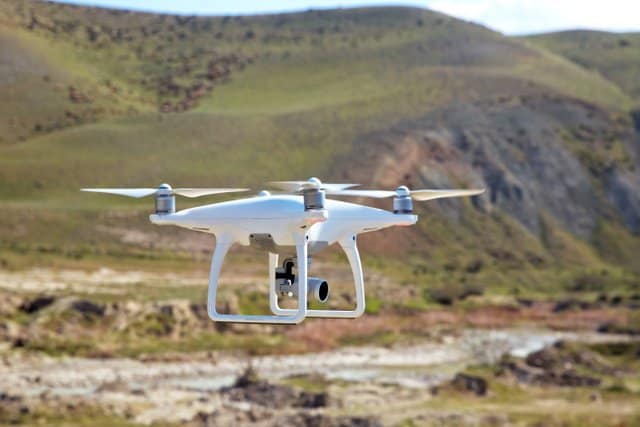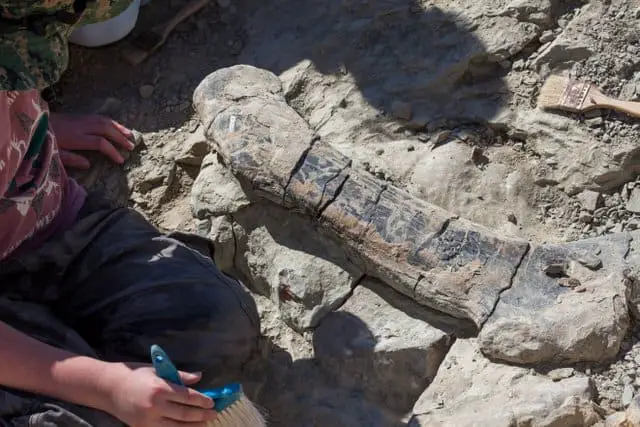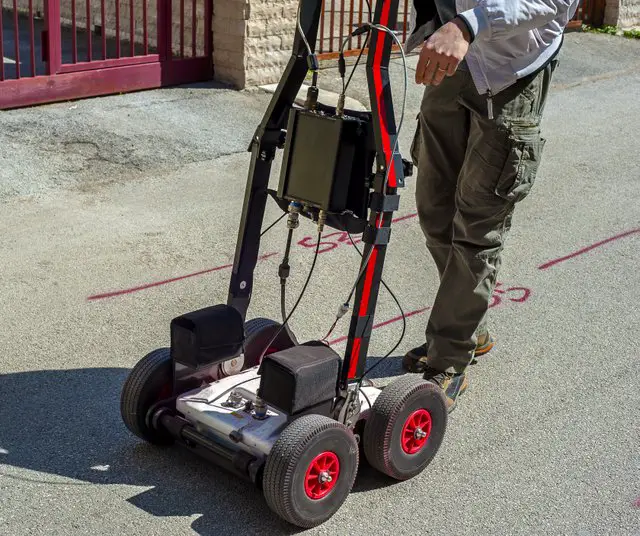When a paleontologist discovers a dinosaur fossil, it’s an incredibly thrilling moment. Now we have the chance to learn even more about the creatures that roamed the earth millions of years ago. Scientists can discover vertebrate fossils as a standalone fossil, or if they are lucky, fossils can be found together in fossil beds. Once the discovery is made, paleontologists can start to extract the fossil specimens. In our excitement to learn about new dinosaur fossils, we might not think much about the paleontologists themselves, as they almost get eclipsed by the fossils. It takes years of study and experience to know how to choose the right place to search for fossils. How exactly, though, do paleontologists know where to dig for fossils?

How Do Paleontologists Know Where to Dig for Fossils?
Paleontologists use paleogeography and biogeography to decide the most likely places where fossils may be. Then it’s a matter of relying on sediment and ground data to determine what may be different about that area and whether it possibly holds fossils. Once a fossil site is identified and significant fossils excavated, that serves as the roadmap for additional excavations.
If you want to learn more about the fascinating ways paleontologists find dinosaur fossils, this is one post you won’t want to miss. In this article, we’ll discuss the paleontological tools used in dinosaur fossil discovery, including the latest types of technologies and talk more about the process of choosing where to dig, and even list some fossil hotspots. Keep reading!
Now that you know the tools of the trade let’s discuss in more detail how a paleontologist decides where to dig for fossils.
Table of Contents
In some cases, there’s no need to dig. Time, wind, and erosion may expose fossils at ground level. Then it’s just a matter of loosening up the fossil and collecting it.
Far more often, a fossil must be unearthed. Paleontologists will determine the most likely location of fossils using as much information as possible, including paleogeography and biogeography data, as we mentioned in the intro.
Using Paleogeography
Paleogeography is studying geographics to determine what the land may have looked like in days long since passed, like the Jurassic Period or Cretaceous Period. Paleogeography involves assessing current day vegetation, soil, climate, and topography and then comparing it to how it might have been millions of years ago to indicate where fossils may be.
Paleontologists don’t always work on their own to uncover fossils and potential fossil sites and fossil beds. They’re often communicating with stratigraphers, experts in rock layers, and how they develop, known as stratification. Geologists may also help in fossil hunting.

Through these experts’ guidance, the paleontologists will begin searching sediments, especially those from lakes and marine bodies. They may look for metamorphic fossils and those trapped in volcanic sediment, but fossils sites are less likely to appear in these areas. Even compared to lake sediments, river sediments tend to yield fewer fossils.
After determining where on the map could have the most fossils, the paleontologists will comb the area, looking for sediment changes to gauge whether a fossil may be there. Then the paleontologists will dig. (Source)
Although it sounds so, unearthing fossils is not an exact science by far. A good paleontologist will admit that luck plays a role in whether the piece of rock contains any fossils or if the uncovered fossil is expected.
That’s why dinosaur bones aren’t discovered every time a paleontological expedition occurs. It’s also why fanatic collectors who lack professional experience but know a lot about fossils can’t make a significant fossil discovery sometimes.
Paleontology Excavations
Excavations take different shapes and forms. They can be a one or two scientist team following a hunch. Alternatively, they can be bigger teams. Geologists, biologists, paleontologists, and students can team together to excavate an area that they believe hold fossil specimens. (Source)
Often, before the dig begins, the scientists scour over geological maps, fossil history, and previous fossil collecting expeditions in the same area to give the possibilities of finding their potential fossil discoveries. It can take days or weeks to assemble the team to the fossil bed area and additional weeks to properly excavate the place.

Where Do Scientists Find Dinosaur Fossils? Some Fossil Hotspots Around the World
That said, some areas worldwide are renowned for containing more fossils than average. You could say that paleontologists are looking for fossil evidence within the layers of rock they are thinking of digging. Many formations and layers of rocks have provided fossil evidence in North America, South America, Europe, Africa, and Asia.
Whether many dinosaurs died here together, the land is relatively unexplored, or it’s just a lucky spot, here are some locations paleontologists return to again and again.
North America
Dinosaur Ridge
Within the Dakota Hogback of the National Natural Landmark is Dinosaur Ridge. This Jefferson County, Colorado landmark between Denver and Morrison was first excavated in 1877 by Othniel Charles Marsh, a paleontologist. Through his research and many other paleontologists, the world got such fossils as the Allosaurus, Diplodocus, Apatosaurus, and Stegosaurus.
By 1973, Dinosaur Ridge had risen to such prominence that the state National Park Service declared it as a Morrison Fossil Area National Natural Landmark. It’s believed the dinosaurs found here lived during the Jurassic Period, especially on the ridge’s west side, which is today the Morrison Formation. (Source)
Over on the east side, the Cretaceous Dakota Formation had lots of footprints that may belong to dinosaurs, hundreds of these prints in all. The prints may have come from the Eolambia or Iguanodon, maybe even both.
Petrified Forest National Park
Petrified Forest National Park is another great place to find fossils. This Arizonian land in Apache and Navajo counties is named not for petrified fossils but rather, wood. More than 340 square miles of the park is covered with petrified trees. The rest of the park includes badlands and shrubland steppes.
Most of the fossils here have been Late Triassic Epoch trees, but not exclusively. Some early dinosaur fossils were dug up, too, as were long-extinct amphibians, phytosaurs (huge reptiles), ginkgoes, cycads, ferns, and petrified logs. These creatures were all expected to have lived some 225 million years back, so it’s good we have this historical record! (Source)
Dinosaur Valley State Park
In Somervell County, Texas, near Glen Rose is the Dinosaur Valley, State Park. With beautiful views of the Paluxy River, this park also has a rich history. In 1908, paleontologists discovered dinosaur tracks across the Glen Rose Formation. It’s not clear which dinosaurs may have made the tracks, but the mudstones, sandstones, and limestones here suggest the fossils have been around since the start of the Cretaceous Period was some 113 million years ago.
Cleveland-Lloyd Dinosaur Quarry
The last fossil hotspot is the Cleveland-Lloyd Dinosaur Quarry within Jurassic National Monument in Emery County, Utah, which isn’t far from Cleveland. It is a major dinosaur fossil site, with paleontologists recovering some 15,000 different bones over the decades.
Which dinosaurs did these bones belong to? Many! The theropods found include the Tanycolagreus, Stokesosaurus, Marshosaurus, Ceratosaurus, and the Allosaurus. The represented sauropods are the Camarasaurus, Barosaurus, and Apatosaurus. Some ornithischians were located as well, among them the Stegosaurus and Camptosaurus.
What were all these dinosaur species doing together, you ask? Scientists and paleontologists aren’t quite sure. The current consensus is the spot may have been a dinosaur trap, although that’s by no means proven. For now, you’ll have to draw your own conclusions!
Asia
Gobi Desert
The Gobi Desert is also considered a fossil hotbed and the home of 26 dinosaur eggs that were dug up back in 1923. We’ve written about the Gobi Desert extensively on this blog, but it deserves a spot on this list for sure.
After all, paleontologists found Tarbosaurus eggs here and learned that this dinosaur species possibly cared for its young. The Gobi Desert is also where some of the most beloved and famous fossils in all of history were unearthed, a Protoceratops and Velociraptor engaged in a literal battle to the death.
Europe and Africa
● Portugal – Camadas de Guimarota – A coal mine near the city of Leiria in central Portugal. Dinosaurs and mammals have been found. However, the coal mine is abandoned and full of water, and all excavations have stopped since the 1990s.
● England, UK – The Jurassic Coast – A famous site on the coast of southern England discovered the first complete Ichthyosaur skeleton and later multiple Plesiosaurs.
● Portugal – The Lourinhã Formation – Famous for the well known Allosaurus (European species) and Torvosaurus. Also, fossil tracks and fossilized dinosaur eggs have been found.
Which Tools Do Paleontologists Use to Find Fossils?
Many people have fond memories of visiting a museum as children and sifting through the sand with basic tools to find toy dinosaur bones. Some of those tools used at the museum that you were thinking of weren’t all that far off from what a real paleontologist utilizes when they’re on the field.
Modern technology has a part to play in finding new fossil discoveries. Artificial intelligence, computers, drones, and satellite images all help to take some of the guesswork out of the search.
The average paleontologist will have the following tools on their person ready to use. So I will cover a list of specific tools that paleontologists use.

New Technology Equipment – Drones and Radar
To find fossil sites, the use of technology and artificial intelligence can help to identify possible places.
● Computers: Paleontologists can use computers to store and analyze data from fossil excavations.
● Satellite images: With the help of satellite images, paleontologists and paleogeologists can identify rock formations that could support fossilization.
● Ground-penetrating radar: Can be used to identify shapes and densities of soil and minerals, which may indicate fossils. (Source)
● Drones: Drones can assist large areas or difficult to reach areas to search for fossils with drones and video equipment mounted on drones. It can save a lot of time.
● GPS – A GPS device (no, not a smartphone) tells the paleontologist the exact coordinates of the located fossil and helps them get back to the site again.
————————————————————————————————
Related Dinosaur Fossil Articles You Might Also Be Interested In:
Where Do Paleontologists Work?
How Much Would A Real Dinosaur Egg Be Worth
Learn How Dinosaur Eggs Are Fossilized And Identified
————————————————————————————————
Common Tools That Paleontologists Use
● Tape Measure – How long and wide is the fossil? To quickly answer that question, a paleontologist will have a tape measure handy. The tape measure is also useful for determining the distance of the fossil to the quarry.
● Plastic Bags – To ensure that smaller bones or segmented fossils get to the lab in one piece, they get stored in a plastic zip bag.
● Markers – A paleontologist will also write on the bags with a permanent marker, jotting down the bag’s contents and the number of fossil pieces within.
● Viniac – Here’s one of the most important tools any paleontologist could have. Viniac is a solution that acts as a consolidant for fossils. In other words, it can keep small fossils in one piece before the paleontologist uses adhesive to reattach the fossil back in the lab.
Viniac includes acetone and vinyl beads with a solution of up to 15 percent, making it move and behave like water.
● Brushes – It is one tool you probably used as a kid playing pretend paleontologist, right? Brushes can remove dust and debris from unearthed fossils. Since fossils come in an assortment of sizes, so do the brushes in a paleontologist’s collection.
● Rock Hammer – To break the rock that might surround a fossil, a rock hammer is recommended. Like with paleontological brushes, rock hammers are available in bigger and smaller sizes to aid in all sorts of digs.
● Walkie-Talkie – To communicate with others on the team, all paleontologists should carry a walkie-talkie. It is more reliable than a smartphone considering the remoteness of most fossil digs.
● Chisels – Chisels may look like dental picks, screwdrivers, or paint scrapers. A paleontologist will use a chisel in conjunction with a rock hammer to unearth the ground around the fossil.
Final Thoughts
Although it’s sometimes depicted that way in television and movies, dinosaur bones are rarely dug up randomly. Paleontologists will rely on paleogeography and biogeography to learn more about the land and what kind of layer of rock they’re exploring. If they can glean information from others, such as geologists, they will.
Identifying subtle differences in the sediment for traces of remains can be the difference between finding dinosaur skeletons and finding nothing, although success isn’t guaranteed.
We hope this article helped you develop a stronger appreciation for what paleontologists do and how dinosaur fossils are found!
